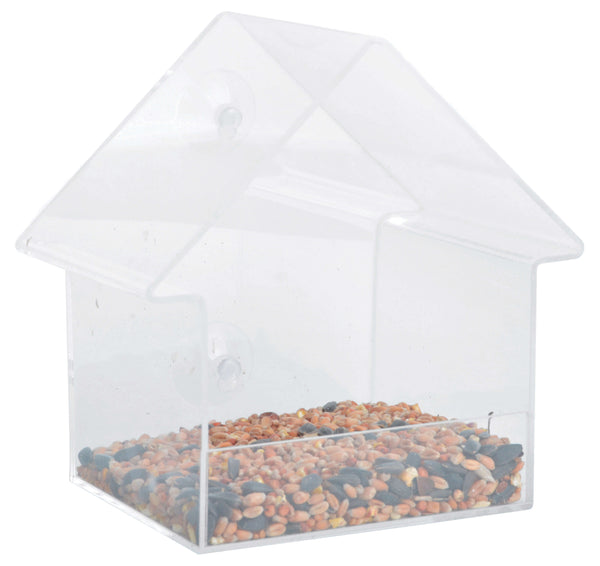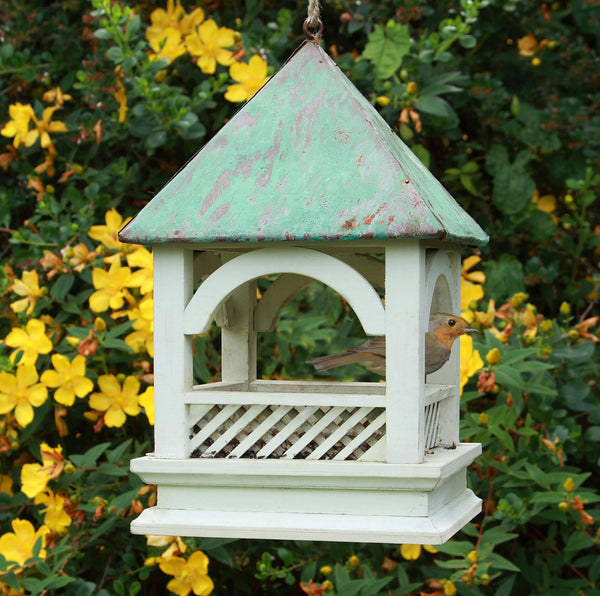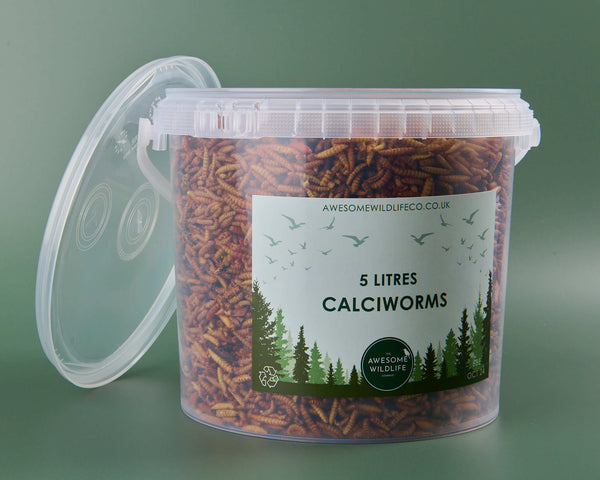UK Birds Beginning With G
Welcome back to our A-Z guide for all sorts of birds. Today, we're focusing on the birds that start with G.
From birds with bright yellow feathers to bright blue birds, we've got a list of UK birds, and other birds from around the world (including North and South America), beginning with G.
UK Birds That Start With G
Gadwall
The Gadwall (Anas strepera) is a medium sized dabbling duck known for its subtle and elegant plumage. Males are predominantly gray with a distinctive black rear end and white belly, while females are mottled brown.
Gadwalls feed primarily on aquatic vegetation and are found in wetland habitats. They breed in the UK in small numbers and are more commonly seen as winter visitors.
Gannet

The Gannet (Morus bassanus) is a large seabird with a striking appearance, featuring white plumage, black wingtips, and a yellowish head.
Known for their dramatic plunge-diving behaviour, Gannets feed mainly on fish. They breed in large colonies on cliffs and remote islands, such as Bass Rock in Scotland, and are widespread around UK coasts outside the breeding season.
Garden Warbler

The Garden Warbler (Sylvia borin) is a small, plain-looking songbird with brownish-grey plumage. Known for its melodious and rich song, this warbler inhabits woodland edges, gardens, and hedgerows.
It is a summer visitor to the UK, arriving from sub-Saharan Africa to breed before returning in the autumn.
Garganey
The Garganey (Spatula querquedula) is a small dabbling duck identifiable by the male's distinctive white crescent above the eye and brownish-grey body.
Females are mottled brown. Garganeys are migratory, visiting the UK in the summer to breed in shallow wetlands before wintering in Africa.
Glaucous Gull

The Glaucous Gull (Larus hyperboreus) is a large, pale gull with a robust build. Adults are mostly white with light grey wings and pink legs.
This Arctic breeder is a winter visitor to the UK, often found along coastlines and occasionally inland, where they scavenge and feed on fish and carrion.
Glossy Ibis
The Glossy Ibis (Plegadis falcinellus) is a striking wading bird with dark, iridescent plumage that shimmers with green, purple, and bronze hues. This bird is the most widespread Ibis species.
They have long, curved bills and long legs. Once a rare visitor, Glossy Ibises are increasingly seen in the UK, particularly in wetlands and coastal areas.
Goldcrest

The Goldcrest (Regulus regulus) is the UK's smallest bird, weighing as little as 5-6 grams. It has olive-green plumage with a striking yellow or orange crown stripe.
Goldcrests inhabit coniferous forests and woodlands, where they forage for insects and spiders. They are resident in the UK, with some additional winter visitors from continental Europe.
Golden Eagle
The Golden Eagle (Aquila chrysaetos) is a large and powerful raptor with a wingspan of up to 2.2 meters. It has dark brown plumage with golden feathers on the back of the head and neck.
In the UK, they are primarily found in the Scottish Highlands, where they hunt mammals and birds in open moorlands and mountainous regions.
Golden Oriole
The Golden Oriole (Oriolus oriolus) is a striking and elusive bird with vibrant yellow plumage and black wings. Males are especially bright, while females are greener.
This species breeds in Europe and is a rare summer visitor to the UK, favouring deciduous woodlands and orchards.
Golden Pheasant
The Golden Pheasant (Chrysolophus pictus) is an exotic and colourful bird with males displaying brilliant red, gold, and blue plumage with a distinctive golden crest.
Originally from China, they have established feral populations in some parts of the UK, particularly in woodlands and dense undergrowth.
Golden Plover
The Golden Plover (Pluvialis apricaria) is a medium-sized wading bird with striking gold and black breeding plumage, turning to a more camouflaged brown and white in winter.
They breed in the upland moors of Scotland and northern England and are seen in large flocks on coastal and inland fields during migration and winter.
Goldeneye
The Goldeneye (Bucephala clangula) is a striking diving duck with males having a dark green head, white body, and distinctive yellow eyes, while females are grey with a brown head. T
hey breed in northern Europe and are winter visitors to the UK, where they inhabit lakes, rivers, and coastal waters.
Greenfinch

The Greenfinch (Chloris chloris) is a stout, medium-sized finch with vibrant green and yellow plumage. Common in gardens, parks, and woodlands across the UK, they feed on seeds and insects.
Despite a recent decline due to disease, Greenfinches remain a familiar sight at bird feeders and in hedgerows.
Around The World
Golden Dove
The Golden Dove, also known as the Yellow Dove or Fiji Gilded Dove (Chrysoenas luteovirens), is a medium-sized pigeon with striking golden-yellow plumage and a distinctive greenish tinge on the wings.
It has a white forehead and bright red rings around its eyes. This species is endemic to the islands of Fiji, where it inhabits tropical and subtropical moist forests, often in lowland areas. Typically seen singly or in pairs, the Golden Dove feeds on fruits, berries, and seeds in the forest canopy.
It is known for its shy and elusive nature, making it difficult to observe in the wild. The Golden Dove is considered Near Threatened by the IUCN due to habitat loss and degradation, with conservation efforts focusing on protecting its forest habitat.
Giant Kingbird
The Giant Kingbird (Tyrannus cubensis) is a large member of the kingbird family, with a robust build and a large, heavy bill. It features grey upper-parts, a white throat and belly, and a distinctive black cap on its head.
Native to Cuba, this species typically inhabits open woodlands, savannas, and forest edges, often near water sources. The Giant Kingbird is known for its aggressive and territorial behaviour and its loud calls.
It feeds on a variety of insects, small vertebrates, and occasionally fruit, often catching prey in mid-air or by sallying from a perch. Listed as Critically Endangered by the IUCN, the Giant Kingbird faces threats from its very limited range, habitat loss, and fragmentation, making conservation efforts crucial to protect its remaining habitat and population.
North and Central America
Green Jay
The Green Jay (Cyanocorax yncas) is a vibrant and colourful bird found in the tropical and subtropical forests of Central and South America, as well as in Texas in the United States. It has a striking green body, blue head, yellowish-green underparts, and a black bib.
Known for their intelligence and social behaviour, Green Jays often form small flocks and communicate with a variety of vocalisations. They feed on a diverse diet including insects, fruits, bird seeds, and small vertebrates. Green Jays are adaptable birds that can thrive in both natural and human-altered environments.
Gray Catbird
It is named for its distinctive cat-like mewing calls. This bird has slate-gray plumage, a black cap, and a rust-coloured patch under its tail. Preferring dense shrubs and thickets, Gray Catbirds are often heard before they are seen.
They are omnivorous, feeding on insects, fruits, and berries. During the breeding season, males are known for their elaborate and varied songs, which can include mimicked sounds from other birds.
Glaucous-winged Gull
The Glaucous-winged Gull (Larus glaucescens) is a large gull native to the North Pacific, commonly found along the coasts of Alaska, British Columbia, and the Pacific Northwest. Adults have pale grey wings and back, white head and body, and pink legs.
They have a robust build and a powerful beak. Glaucous-winged Gulls are opportunistic feeders, scavenging on beaches and in urban areas, and also hunting for fish and marine invertebrates. They are highly adaptable and can be seen nesting on cliffs, rooftops, and islands.
Great Horned Owl
The Great Horned Owl (Bubo virginianus) is one of the most widespread and powerful owls in the Americas. It is easily recognised by its large size, ear tufts (which resemble horns), and striking yellow eyes.
The plumage is mottled with grey, brown, and white, providing excellent camouflage. Great Horned Owls are versatile predators, capable of hunting a wide range of prey including mammals, birds, reptiles, and insects. They inhabit a variety of environments, from forests and deserts to urban areas, and are known for their deep, resonant hoots.
Great Blue Heron
The Great Blue Heron (Ardea herodias) is the largest heron in North America, standing about 1.2 meters tall with a wingspan of up to 2 meters. It has blue-gray plumage, a long neck, and a sharp, yellow bill.
Found near lakes, rivers, marshes, and coastal shorelines, Great Blue Herons are skilled hunters, stalking fish, amphibians, and small mammals in shallow waters. They are solitary feeders but often nest in colonies called rookeries. Their graceful flight and striking appearance make them a familiar sight in suitable habitats across their range.
Giant Wood Rail
The Giant Wood Rail (Aramides ypecaha) is a large and colourful bird native to the marshes and wetlands of South America. It has olive-green upper-parts, chestnut underparts, a gray head and neck, and a striking red bill and legs.
Known for its loud and distinctive calls, the Giant Wood Rail is often heard before it is seen. It feeds on a variety of aquatic invertebrates, small fish, and plant matter. These birds are generally shy and prefer dense, reedy habitats where they can forage and nest with relative seclusion.
Green Hermit
The Green Hermit (Phaethornis guy) is a medium-sized hummingbird found in the tropical forests of Central and South America. It has a metallic green body, a long, curved bill, and elongated central tail feathers. Males and females look similar, though males are slightly larger. Green Hermits are specialized nectar feeders, often visiting heliconia and other tubular flowers. They also consume small insects and spiders. Known for their territorial behavior, males establish and defend feeding territories, often engaging in aggressive displays to ward off intruders.
Green Kingfisher
The Green Kingfisher (Chloroceryle americana) is a small, vibrant bird found near slow-moving rivers, streams, and ponds in the American tropics and subtropics, extending into Texas and Arizona in the United States. It has a glossy green back and wings, a white collar, and a rust-colored chest band.
Males and females have similar plumage, though females have less extensive rust colouring. Green Kingfishers are adept hunters, diving into water to catch small fish and aquatic prey. They typically perch low over the water, waiting patiently for prey to pass by.










